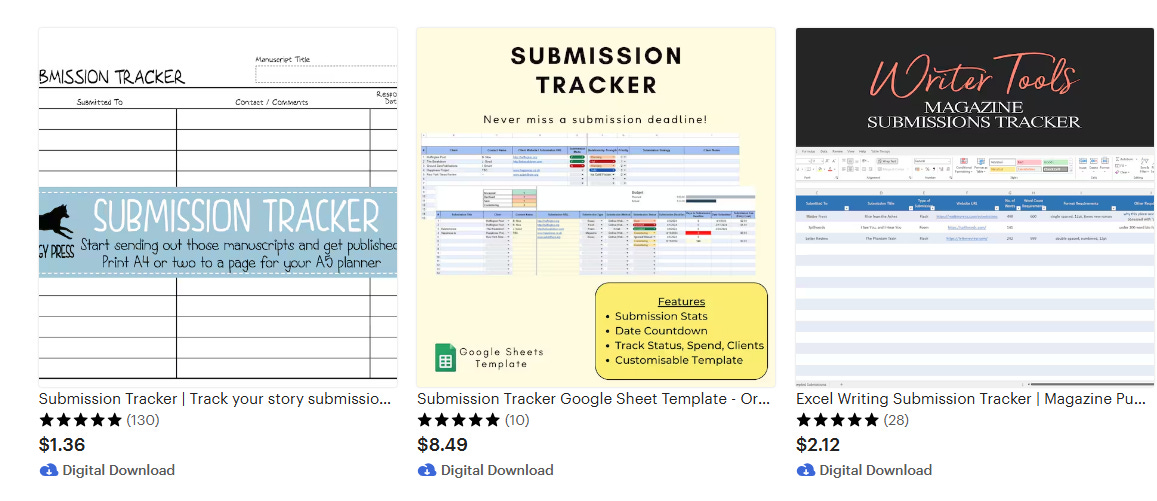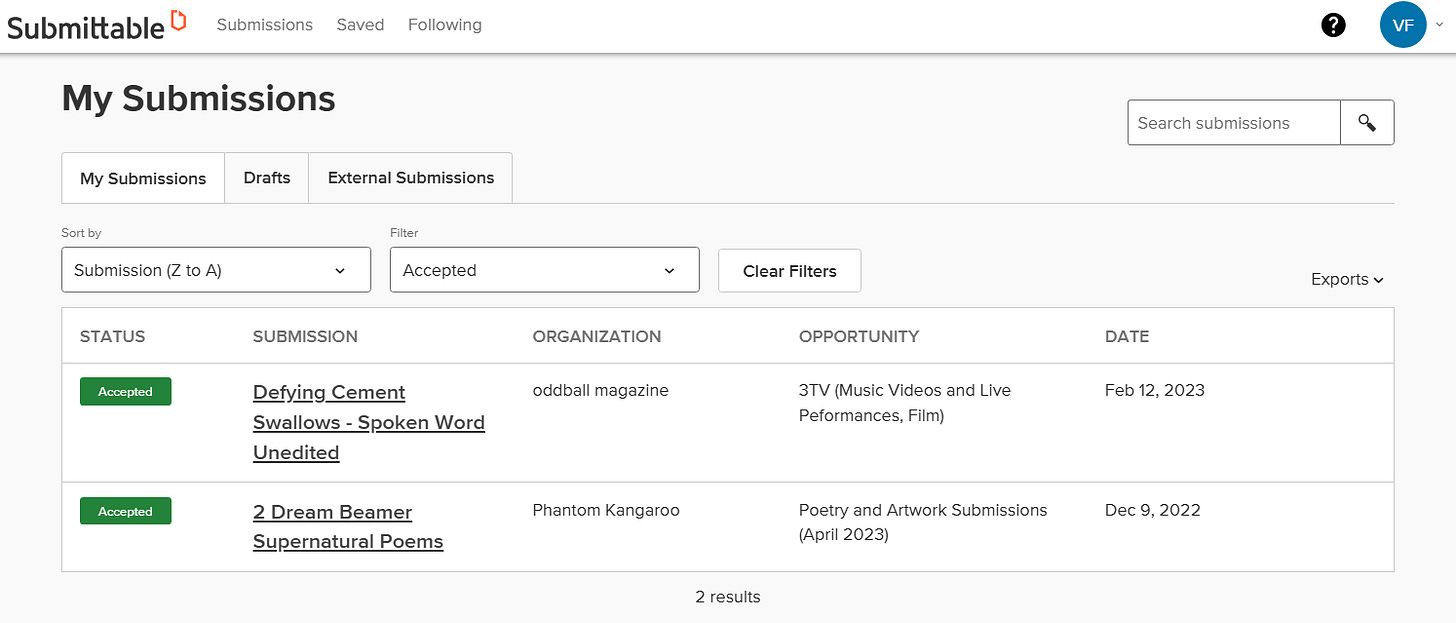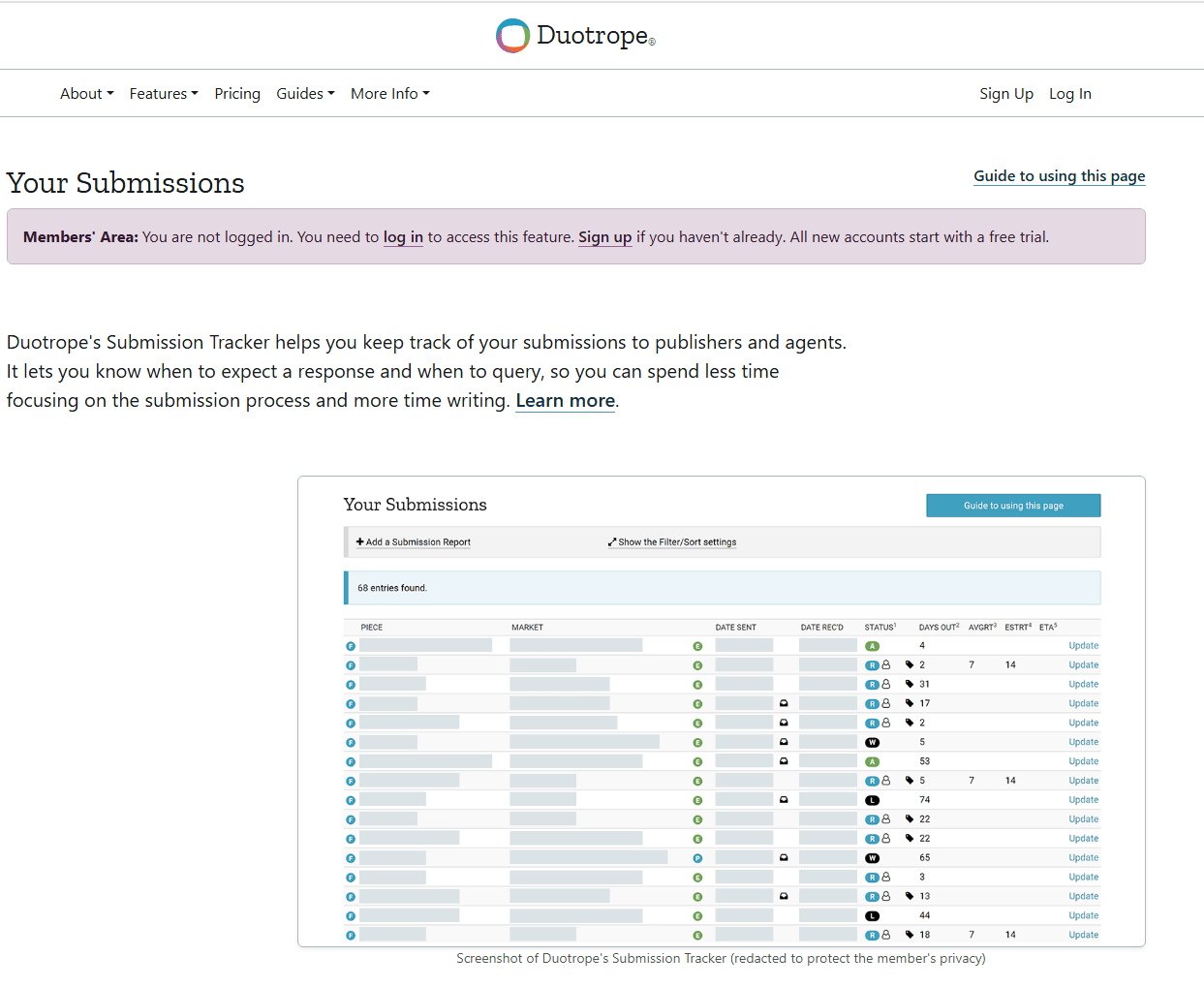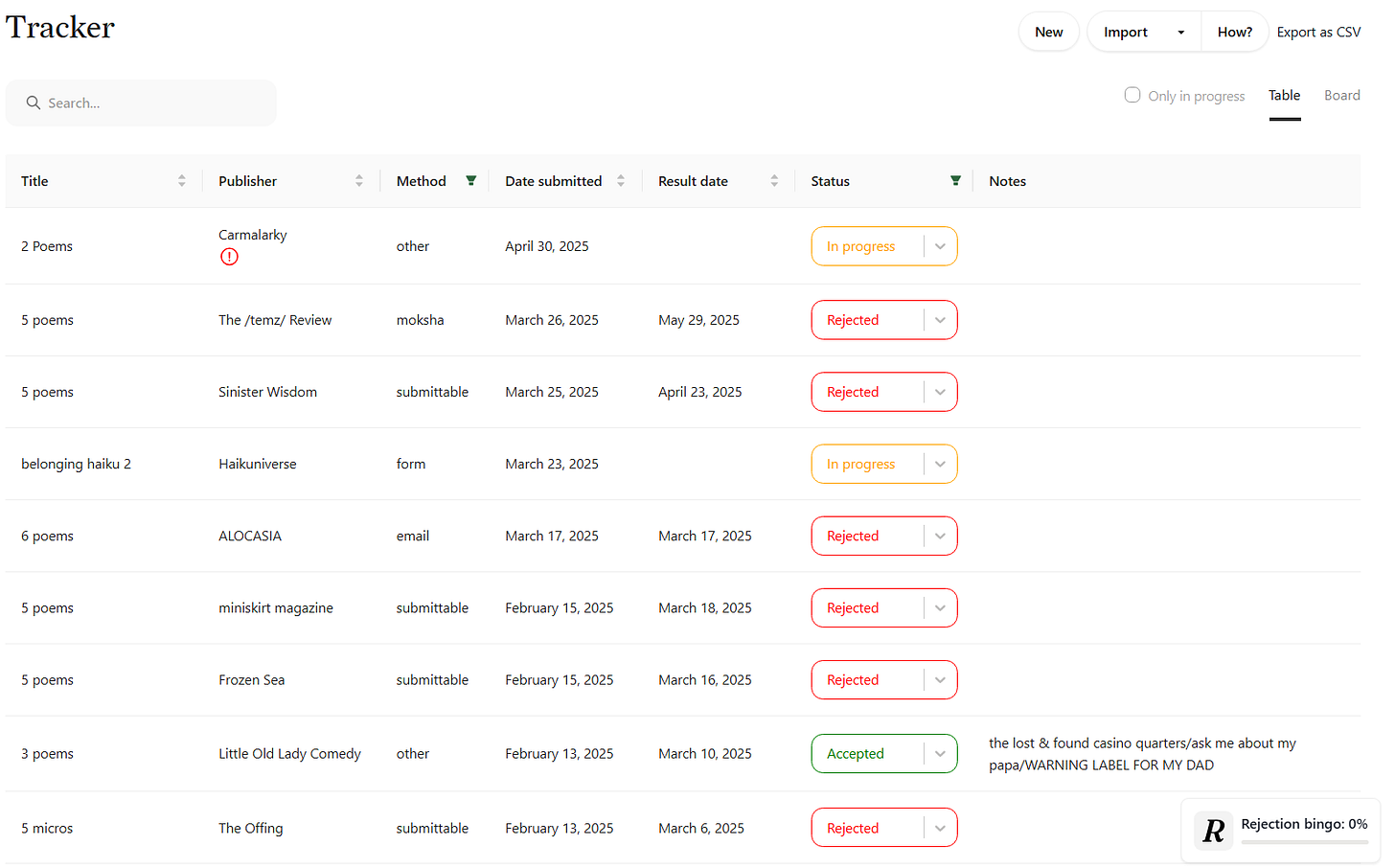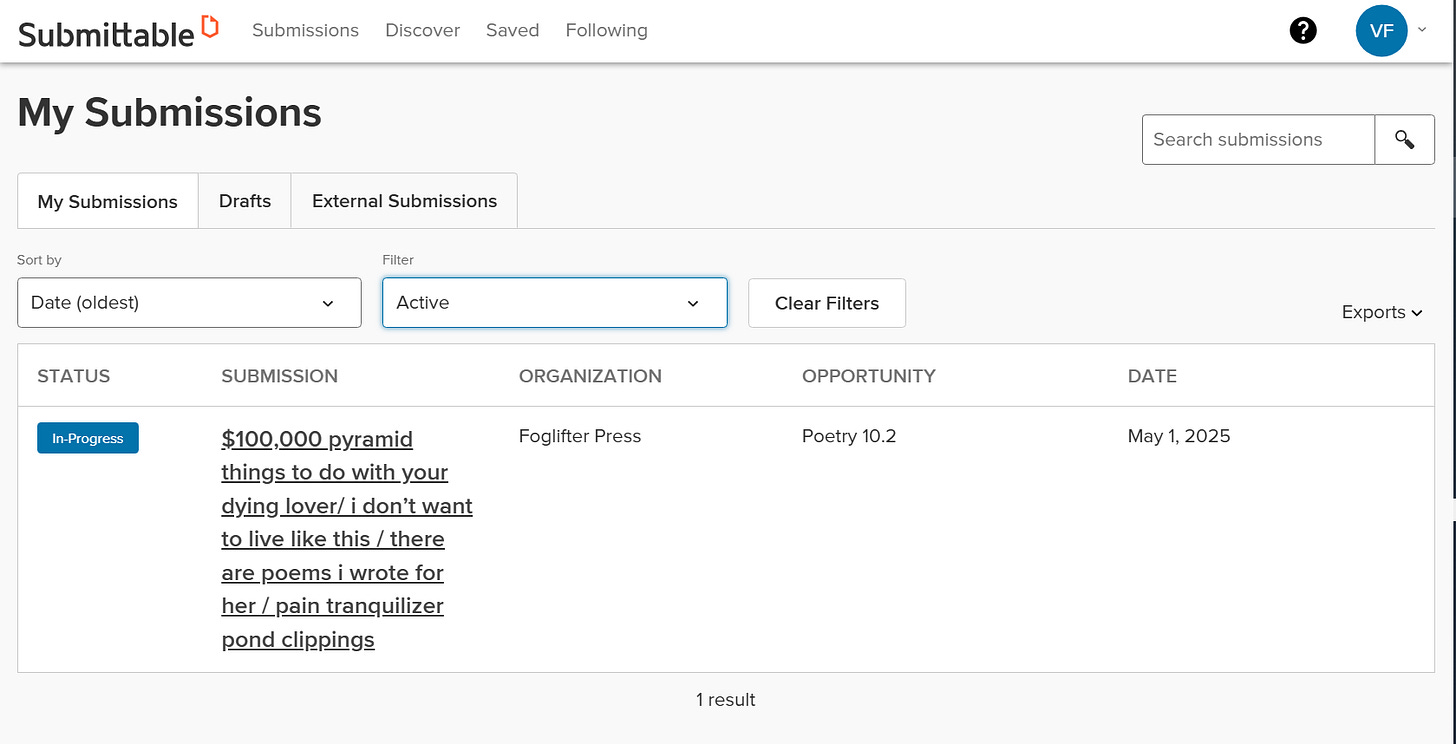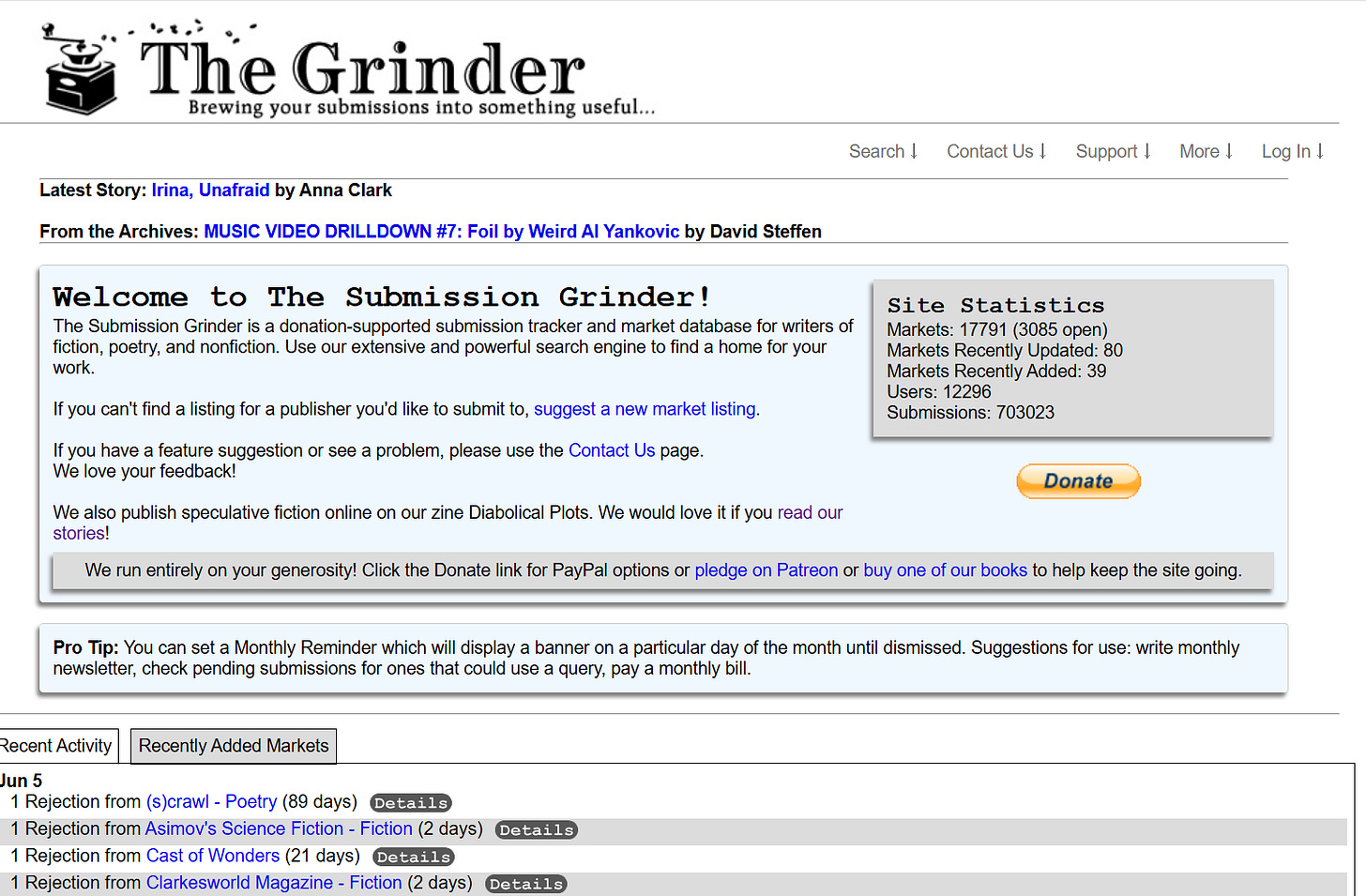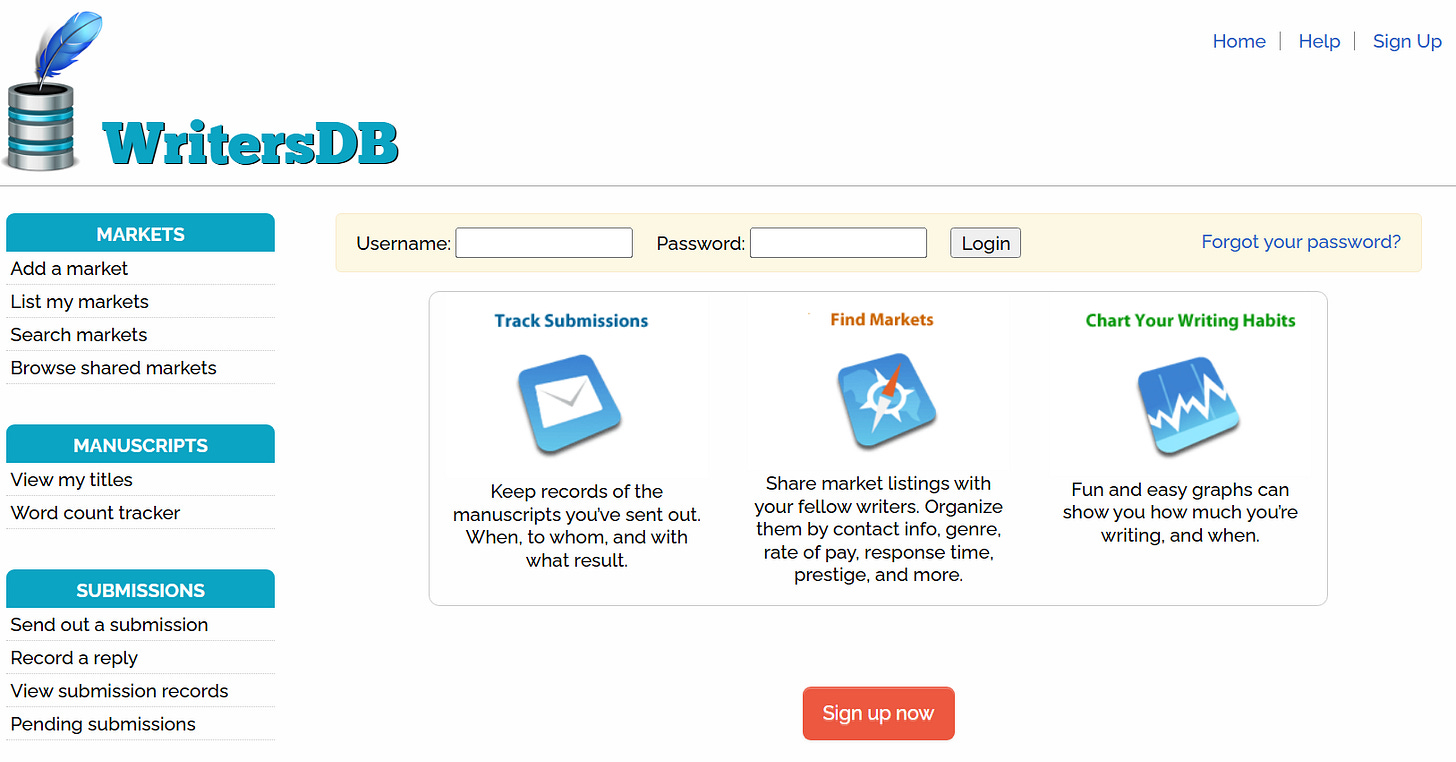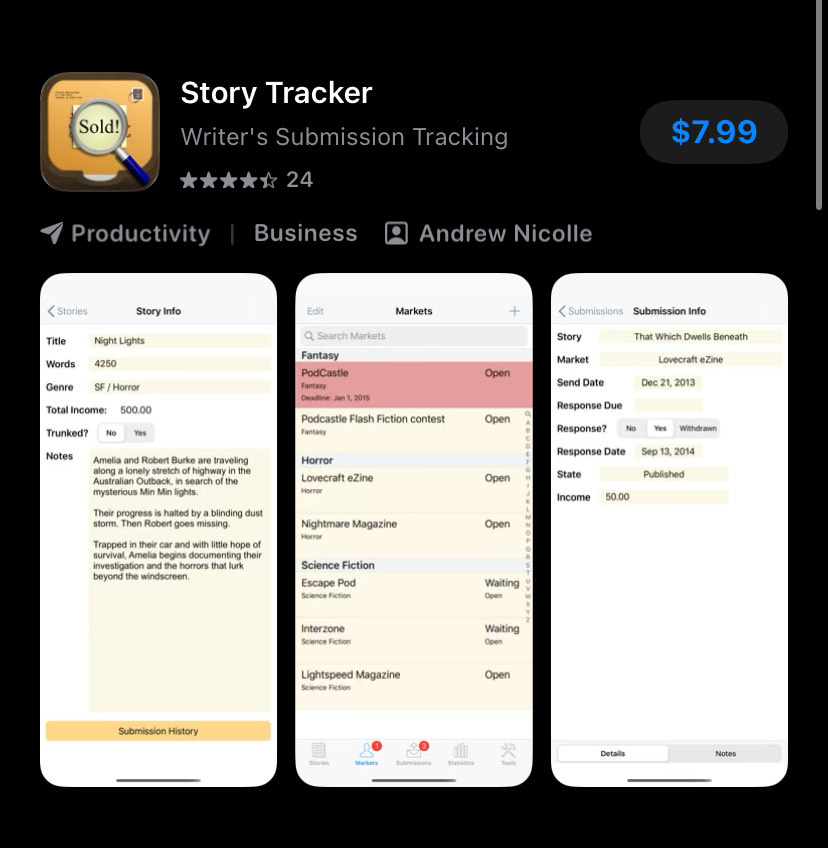The Most Common Ways Writers Track Their Submissions To Literary Magazines
a few ways that writers keep tabs on their submissions
1. Excel Spreadsheets
A majority of writers I’ve come across use a jumbo color-coded Microsoft Excel spreadsheet or Google Sheets to track their submissions to lit mags and journals. It’s a simple, fast way to organize everything over time: your poem(s) or artwork titles, the place you submitted to, the date, decision, whether there was payment, etc.
I personally have never made a spreadsheet because I don’t submit to places as much anymore, as most of my time is now directed towards Dipity Lit Mag and dipity.press. When I do get an acceptance once in a blue moon, I will usually add notes to my Word documents or use one of the other ways listed. Some programs in existence have costs, of course, but I think that’s a waste of money when plenty of free methods exist. It’s so important to stay organized, especially if you’re doing simultaneous submissions.
I won’t create a table because a lot of awesome free and small fee ones exist already, so I’ll link some below that caught my eye.
The Forever Workshop has a wonderful, detailed article here with an example one to download beneath Tracking Submissions from Shannan Mann from ONLY POEMS
Matt Bell’s Tracking Spreadsheet Template
Note: You can also find and download it here
A few Etsy shops have some instant download Submission Tracking Templates that range between $1-$10, but honestly, you can modify a free one online just by keyword searching “Submission Tracking Templates” via Google search on the first few pages.
If you reach out to others in the writing community, too, or ones you see using a template, I’m sure they’d be happy to share an example over to you as well or share their tracking method setup.
2. Submittable
Quite a few writers keep track of their submissions just through Submittable. There are GREEN [ACCEPTED] and GREY [DECLINED] statuses, along with WITHDRAWN and COMPLETED. Very few lit mags and journals use the COMPLETED status because writers like to see the ACCEPTANCES together, but some do use it to indicate they no longer have tasks on that sub, which is less beneficial to a writer if they’re leveraging tracking in Submittable.
Below are the last few acceptances in my own Submittable older account saved screenshot, but more recently, I have submitted to some places that use solely email or a built-in site intake form, and got 4 comedy poems accepted. However, many poets still use Excel spreadsheets to track any payments, individual poem titles, simultaneous subs, and ones they were ghosted on or never heard back on.
2. Duotrope
Duotrope has a really cool submission tracker, too, where you can input dates, the status, e.g., pending, accepted, or lost, and rejected. I think this is a better alternative than just using Submittable—keep in my mind not all lit mags use Submittable, and some of your submissions may be done via email. You just have to become a member, which is $5 a month or $50 a year—the membership has other benefits that you can check out on the site, and if you prefer not to pay for a membership, you may want to just use your own spreadsheet for organization.
3. Chills Subs Submissions Tracker
I just started using this
Tracker a bit more in 2025, as you can see below, plus there are two view options, and you can export as a CSV, which I may do too, or even try pivoting to a backup spreadsheet this year. There’s no fee or membership required to use this.I prefer the full Kanban board view, though. A similar alternative to this would be Trello.
I haven’t gotten around to their rejection bingo in the bottom right-hand corner LOL. You can import only data from Grinder and Submittable—NOT Duotrope and possibly a few other places due to their terms of service or conditions, per the pop-up I saw.
NOTE: You may notice in some screenshots that I just put the total number of poems in the submission name field, if they were beyond one, but you don’t have to do that (I also didn’t want to share all those titles there and tend to come up with fun summarized ones typically indicating the mood or theme)—some lit mags do outright tell you to list the individual titles out, or to just put the number of poems though especially via email. When you have a large number of submissions over time in whichever submission system you're using, typically putting each individual title separated by an indicator, slashes, commas, etc., is good so that you can easily find them or to export them out to a CSV in the future for your records.
I started using a forward slash, more so—above is an example from last month. I wouldn’t do that for manuscripts, though—just put the chapbook or collection title. Some submission systems or forms may have a character limit, so you can abbreviate some words in your title or shorten it to fit if you’re sending 2, 3, 4, or 5+ poems or short stories, depending on their allotted amount.
4. The Grinder
I have never used Submission Grinder, but know quite a few who do, and it looks comprehensive and detailed in terms of stat tracking. It looks like it was founded through the zine Diabolical Plots, which you should def check out. I may try registering and creating an account one day—there does not appear to be any fees to do so, nor membership at this time. They tend to refer to places as “markets.” Still, some writers prefer to have a backup Excel spreadsheet with additional notes and column fields, or they may choose to transfer data into the Chill Subs Submission Tracker, too.
5. The Writer’s Database
Quite a lot of web-based submission trackers exist. I’ve shared a few, though not all, and came across this WritersDB one as well, but haven’t used it myself.
6. Mobile Apps
If you’re on the go quite a bit, then you may prefer using a mobile submission tracker app of some kind. I’m sure there are others, but most appear to be paid apps in the Google Play and Apple Store. One that quite a few seem to mention is Story Tracker, but it’s $7.99. It has “Story” in the title, which leads one to assume it’s geared towards short story tracking, but I believe mentions it can be used for poems and other types of writing submissions in the description.
DISCUSSION QUESTION: How Do You Keep Track Of Your Submissions?
The Lit Mag Lab is brought to you by Dipity Lit Mag & dipity.press founded by Vevna Forrow (Jazz Marie Kaur). You can support this series by pledging your support or buying me a coffee or pizza below if you’d like, but not required to by any means. As always, keep writing and reading poetry. Have awesome days ahead!





